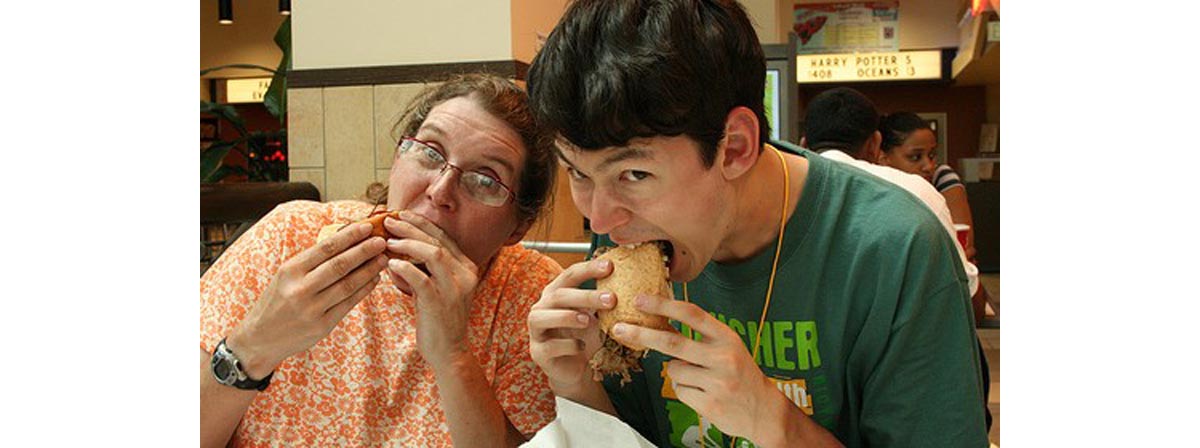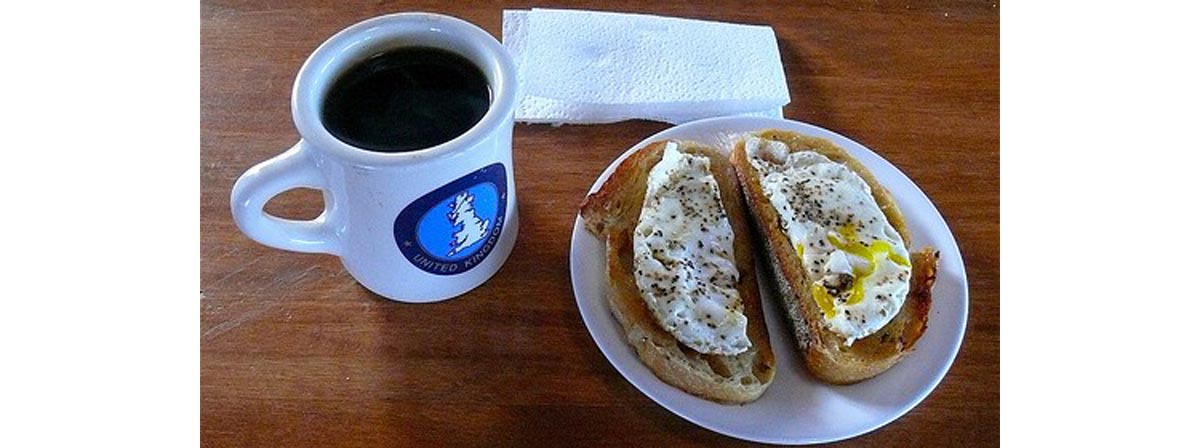Calories In Vs. Calories Out
We all know that the most basic equation that governs whether you're overweight or not is calories in vs. calories out. If you eat more than you use, you'll gain weight; if you eat less than you use, you'll lose weight.

It's not possible to argue against this, but it is necessary to point out that it isn't the whole picture. Imagine three scenarios: if you ate 2, 500 calories a day - a common recommendation for a healthy intake - and it was all carbohydrates, you'd expect a different outcome to the one you'd get if you ate nothing but fat, or nothing but protein.
The Roots of Weight Gain
The major reason why we gain weight needs to be understood in terms of gaining fat. After all, being sedentary and overeating doesn't make you gain just any kind of weight: chips and pizza won't make you look like Schwarzenegger in the eighties.
It's logical, therefore, to think that it's fat that causes a person to gain fat. Yet fat isn't actually a very large component of the kind of diet that causes us to gain fat. Yes, people who are fat often eat a lot of fried chicken, cream and so forth, and yes, fat is the most calorie-dense of all the macronutrients.
But the real issue is the relationship between metabolic output and carbohydrates.
Our Diet Has Changed, But Our Bodies Haven't
Our bodies haven't really changed very much in the last fifty thousand years. To the best of our knowledge humans from modern times and anatomically modern humans living in ancient times are the same, but we don't live the way we did fifty thousand years ago.
Our lifestyles and our diets have changed a lot, and the rate of change has accelerated in the last ten thousand years, and again in the last four thousand, and several times more in the last thousand years. Fifty thousand years ago, the average human being lived as a hunter-gatherer, living a life characterized by a very high degree of social cohesion and a lot of rest, and eating a diet very high in protein and fat , vitamins, minerals and fiber, and relatively low in carbohydrates. These points require some caveats, though: hunter gatherer life was probably far from idyllic, with murder a common cause of death and sudden death by disease, or injury, constantly close.
What doesn't show up much in ancient hunter gatherer remains is widespread chronic disease. Injuries were common, but tooth decay, metabolic syndrome and so forth were rare. These began to show up after the agricultural revolution, when a diet high in foods grown for their high caloric content became common. These foods were largely grains.
After the advent of a society that ate grains and legumes a lot, we begin to see remains with tooth decay and other chronic illnesses, the cause of which is the use of high levels of carbohydrates as a fuel (ironically, whole grains caused more trouble, despite their reputation as a health food, since their hard husks abraded the digestive tract even as the grit from grinding stones abraded people's tooth enamel).
Carbohydrate is a fuel source best suited to low intensity efforts: high intensity efforts are largely powered by a different biological economy, based on the adenosine triphosphate molecule which is usually derived from fat. When carbohydrates are eaten they enter the bloodstream fairly quickly, and the liver responds by pulling them back out and storing them.
Blood sugar is blood sugar, and can be consumed by the body immediately, while the remainder should be stored in the liver and muscles as glycogen. But if there isn't high glycogen turnover, the liver will store extra calories as fat - and it doesn't distinguish between triglycerides. If you want to get fat, eat fat and excessive carbohydrates at the same time and avoid exercise.
Constant Low-Level Activity
Ancestral human beings were physically active more or less constantly, with bursts of intense exercise like chasing prey interspersing longer periods of walking, carrying and other lighter exercise. During the agricultural period and the industrial one, the average person worked with his or her hands, and typically ate a diet high in what we would now call secondary meat products like organs and bone stock, augmented by carbohydrate foods like potatoes and bread.
Neither of these is the situation now. The average person no longer does much physical work. An average American walks only about 400 yards a day, and many of us are now so sedentary that the 2, 500 calories-per-day recommendation of an average man may actually be too high.
Yet by comparison, an industrial worker of the 1950's may have needed as much as 8, 000 or 9, 000 calories a day!
Getting BackTo Food Quality
What we see now, therefore, is a situation where we have the high calorie, low nutrient foods left us by the agricultural revolution, and the sedentary lifestyle left us by the post-industrial economy, together with the rise of highly processed foodstuffs like high-fructose corn syrup designed to cut costs in production for the food industry.

That's a recipe for disaster, and it means that even if you're eating the right number of calories, you might be stuck between a rock and a hard place: constant hunger on one hand, or missing your calorie target on the other. Add in unrealistic expectations of exercise and you're well on your way to giving up.
The solution to this conundrum lies in understanding what's really in food, in terms of quality. I'm going to explain, but first I'd like to mention this simple rule, which I'll revisit several times:
If it has no nutritional value, only calories, don't eat it.
If you're trying to gain weight, there's a good argument for taking in some calories just as calories. If you're trying to lose weight, there really isn't. Look for foods that contain high amounts of nutrients comparative to their caloric content, and you might find you actually need to eat less calories than you thought.
One way to improve your nutritional intake is to ask your grandmother for cooking tips. If she learned to cook before the widespread availability of processed foods she'll have recipes for roasts, gravies, broths and soups that will save you money and give a more nutritional diet with a reduced calorie load.
A portion of beef stew made at home might contain 250 calories - but of those, 22 grams will be protein - that's a third again higher. Some recipes call for as much as 27 grams of protein, as well as significantly more fiber - double the fiber or more of the burger.
It's cheaper, too.
Foods That Make You Feel Fuller Longer, And Are Better For You?
The key issue here is that foods like stews can reduce our caloric needs - by as much as 20% in some cases, meaning you can hit your calorie numbers more easily and still stay feeling full. Stews and foods like them can be a way to save money, to know what's in your foods and to ensure that you eat less and less empty calories. Again, avoid eating any foods that contain calories without any other nutritional value.
When you're looking for a place to get your calories, ask yourself:
1: Is it high in protein? High protein foods slow energy absorption and make you feel full for longer, as well as being high in protein, a vital nutrient most of us eat far too little of.
2: Is it high in fiber? High fiber foods slow energy absorption too, as well as regularizing digestion. High fiber foods are particularly effective at reducing the rate at which carbohydrates are absorbed.
3: Is it high in vitamins? Don't just think fruit, here. The most vitamin-rich food you can buy isn't a fruit or a vegetable, or a super berry that costs $5 a pack: it's liver.
4: Is it high in animal bone and stock products? These food types reduce our need for calories and improve protein metabolism, reducing the need for protein by up to half.
That would add up to 2300 calories - but it also includes 100g of protein, 30g of selenium, 120% of your recommended intake of vitamin B6 and over 15g of dietary fiber. Most of it is simple to cook and a fair amount of it is cheap. It's based on looking for foods that offer nutritional benefits in addition to their caloric content: If it has nothing but calories, don't eat it!
- Photo courtesy of Alex Nelson by Flickr : www.flickr.com/photos/loup-vert/3097536094/
- Photo courtesy of Larry & Teddy Page by Flickr : www.flickr.com/photos/igboo/4376927884/


Your thoughts on this